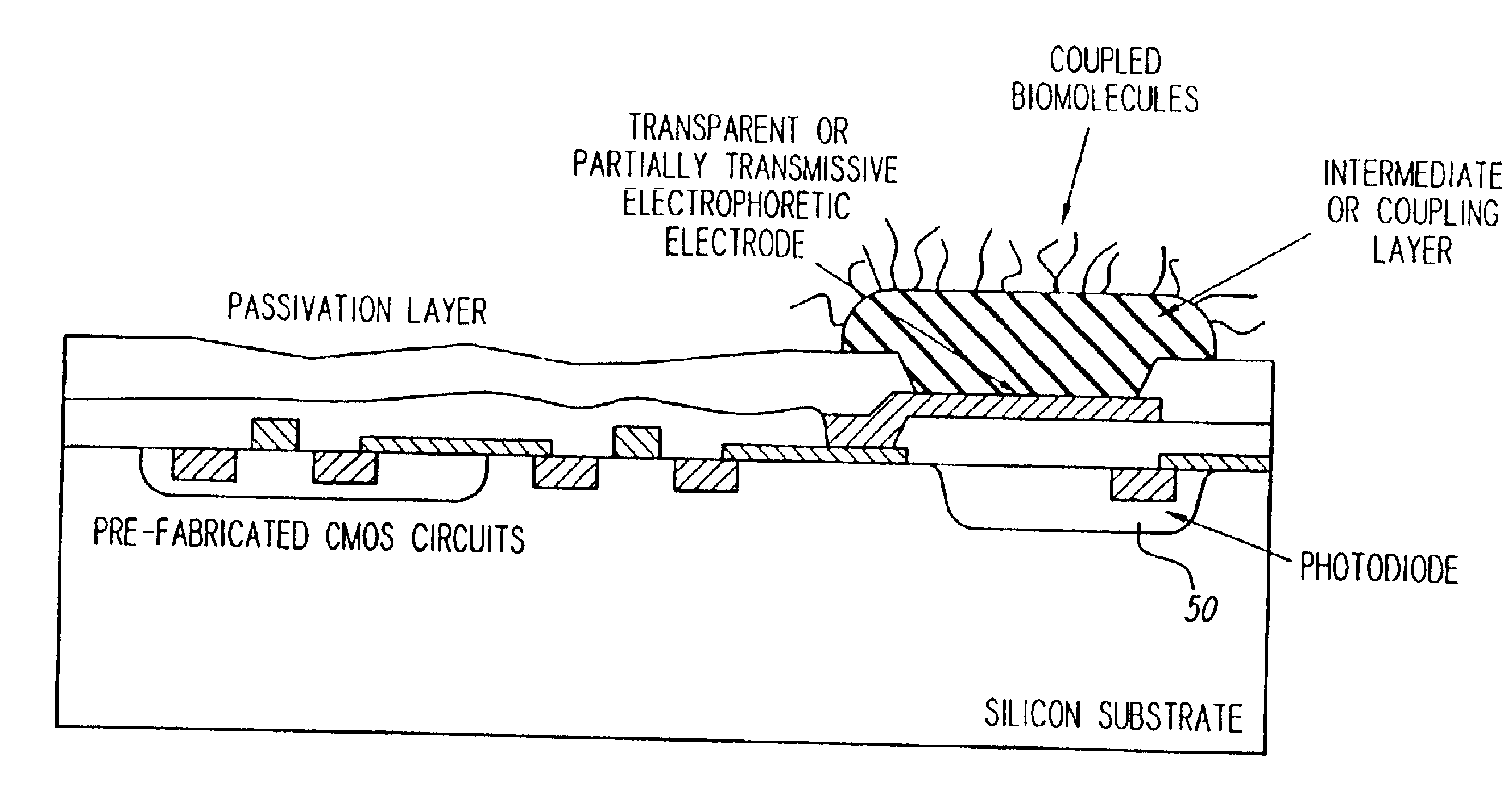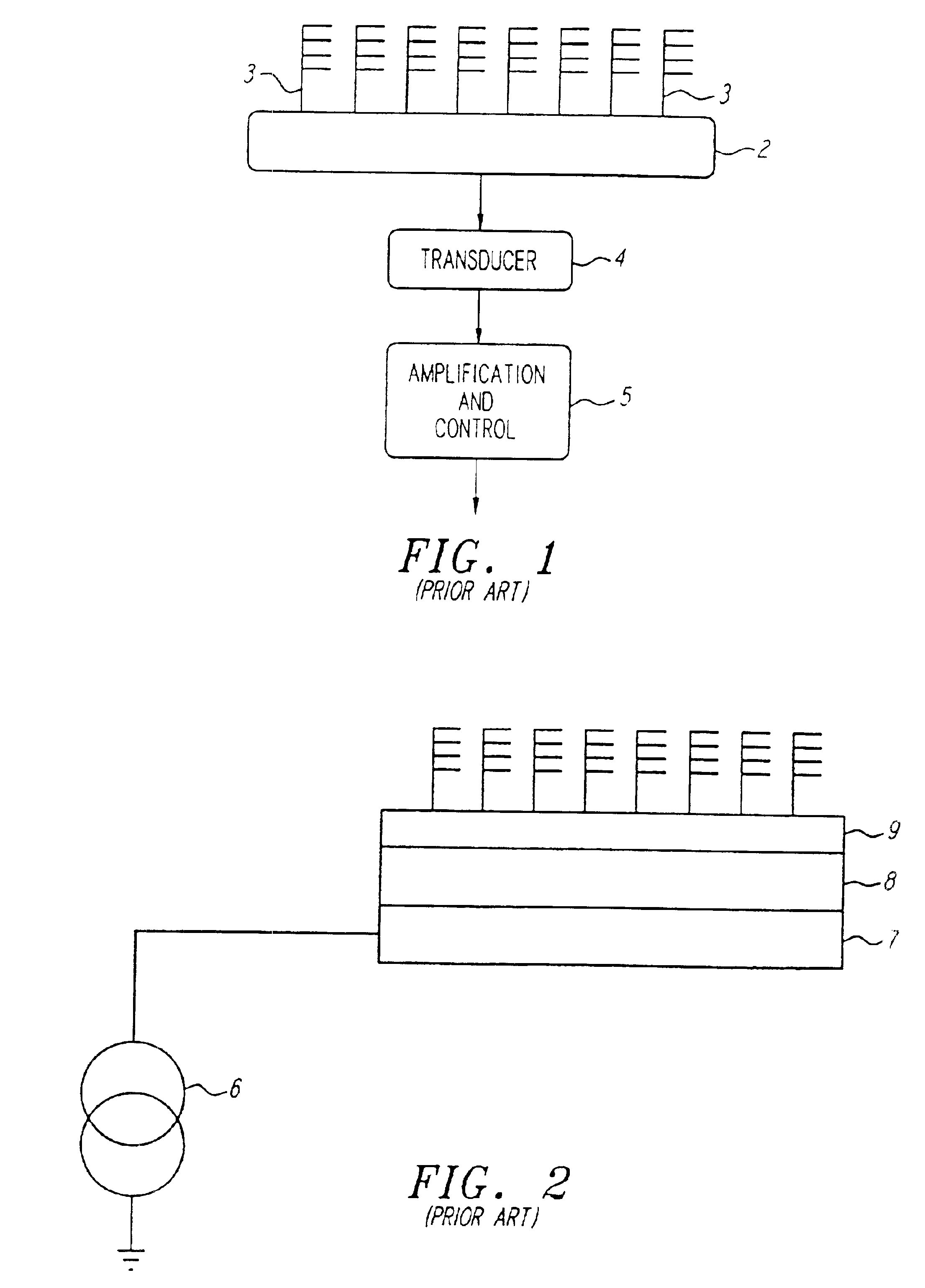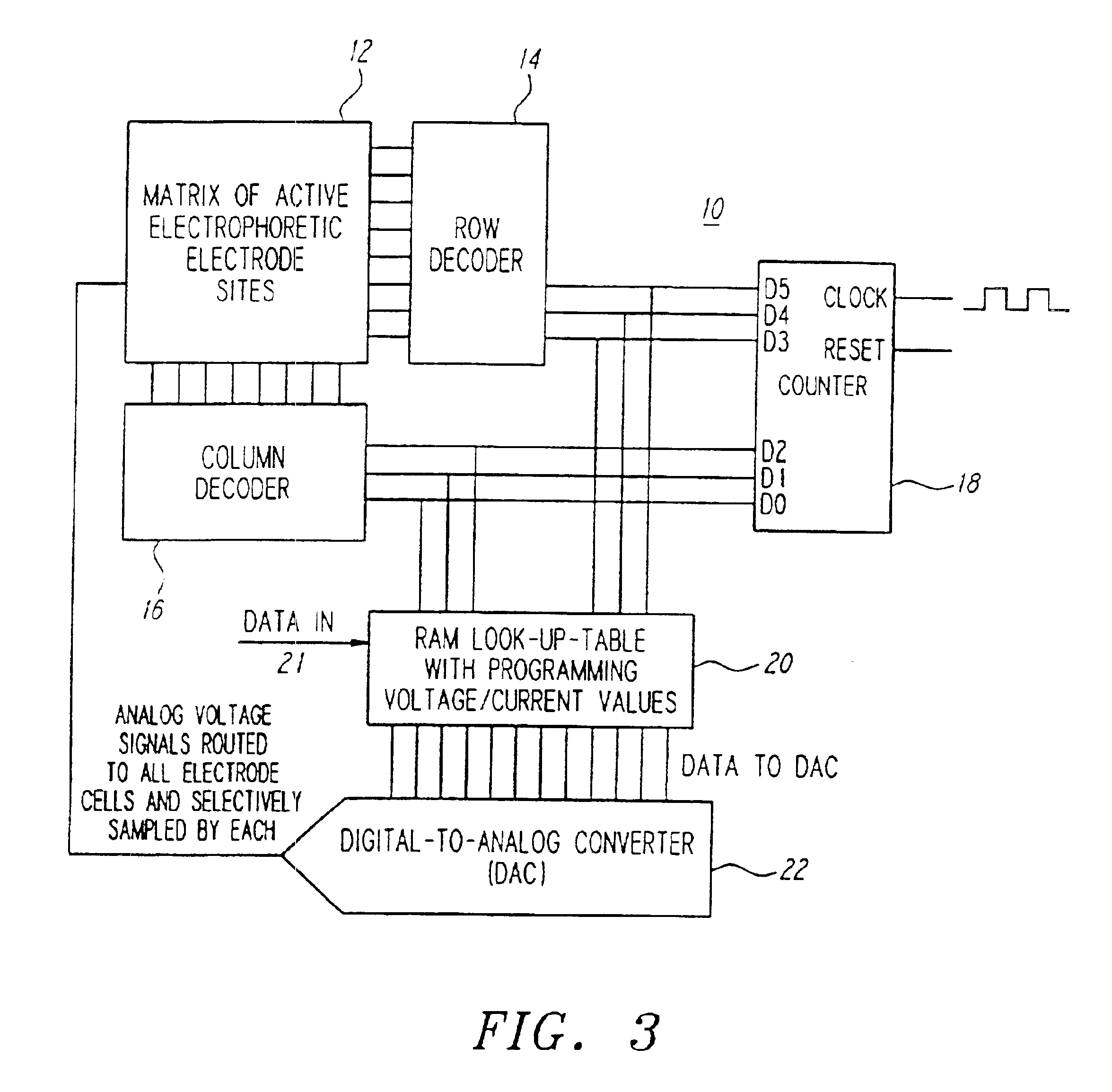Multiplexed active biologic array
a biologic array and multi-layered technology, applied in the field of electronic systems, can solve the problems of arbitrarily slow update rate, and achieve the effect of enhancing the progression of reactions and minimizing the utilization of off-chip control circuitry
- Summary
- Abstract
- Description
- Claims
- Application Information
AI Technical Summary
Benefits of technology
Problems solved by technology
Method used
Image
Examples
Embodiment Construction
Turning now to the drawings, as shown in FIG. 3, a biologic array 10 in accordance with one preferred form of the present invention may comprise a matrix of active biologic electrode sites 12, a row decoder 14, a column decoder 16, a counter 18, a random access memory (RAM) 20 acting as a look-up table, and a digital-to-analog converter (DAC) 22. In a preferred form, each of the above listed elements may be disposed on a single semiconductor chip, and the entire array 10 may be fabricated using conventional CMOS semiconductor fabrication techniques. Further, in the presently preferred form a computer (not shown) may be used to load data, as needed, into the RAM 20 via, for example, a data input port 21.
Turning now also to FIG. 4(a), each biologic electrode site 24, which makes up the matrix of biologic electrodes 12, may comprise a sample-and-hold circuit 26, an amplifier 28 and an electrode 30. In one preferred form, the sample-and-hold circuit 26 may comprise a capacitor 32 and tw...
PUM
| Property | Measurement | Unit |
|---|---|---|
| voltage | aaaaa | aaaaa |
| voltages | aaaaa | aaaaa |
| electrical field | aaaaa | aaaaa |
Abstract
Description
Claims
Application Information
 Login to View More
Login to View More - R&D
- Intellectual Property
- Life Sciences
- Materials
- Tech Scout
- Unparalleled Data Quality
- Higher Quality Content
- 60% Fewer Hallucinations
Browse by: Latest US Patents, China's latest patents, Technical Efficacy Thesaurus, Application Domain, Technology Topic, Popular Technical Reports.
© 2025 PatSnap. All rights reserved.Legal|Privacy policy|Modern Slavery Act Transparency Statement|Sitemap|About US| Contact US: help@patsnap.com



